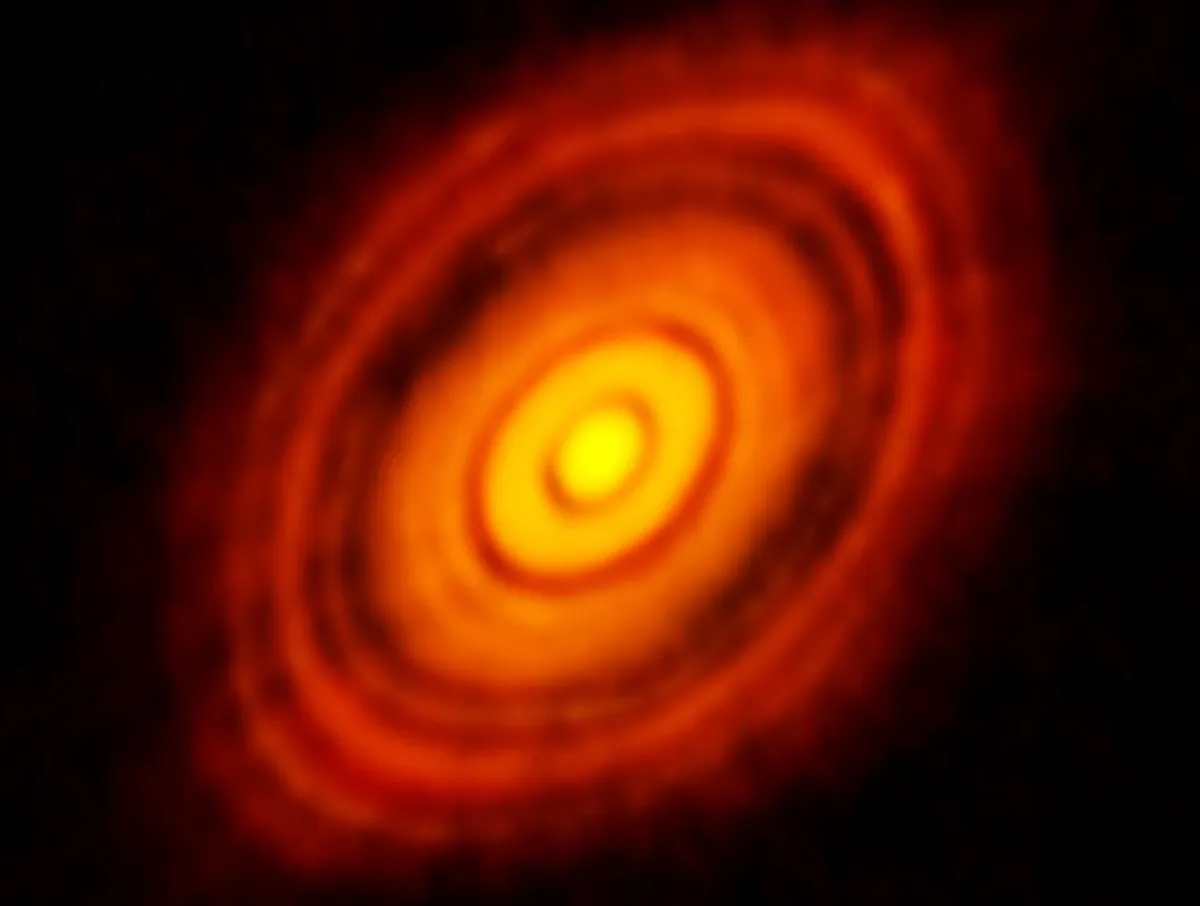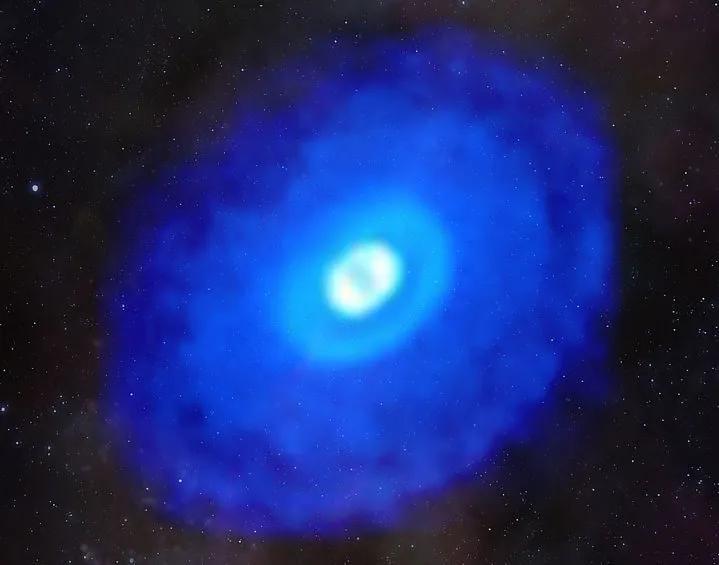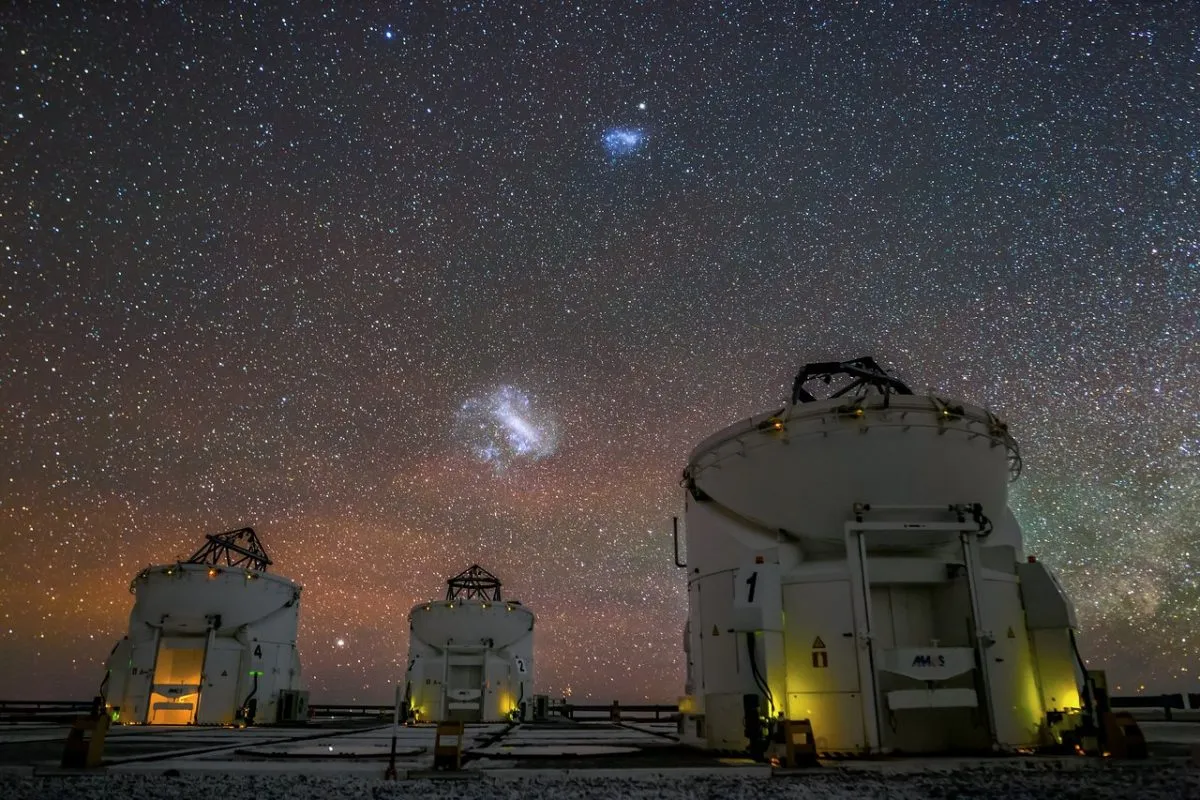Astronomers have captured an image of a small planet forming within the dusty disc surrounding a distant star.
The still-forming planet is carving out a gap in the dusty disc as it orbits the star.

Astronomers had long theorised that planets probably exist in the gaps in these ‘circumstellar’ discs, and that they may even create the gaps.
But this is the first time one has been directly observed.

A protoplanet around a star
The body, known as WISPIT 2b, is technically a young ‘protoplanet’, because it hasn’t yet become a fully-fledged planet and is still in the process of forming.
Despite this, it’s enormous. It’s a gas giant about 5 times as massive as Jupiter.
It’s very young in planetary terms, at just 5 million years old. To put it into perspective, Earth is 4.5 billion years old.
WISPIT 2b is also close-by, just 437 lightyears from Earth.

Dusty discs and newborn planets
Young stars are known to have rings of dust surrounding them, made up of the leftover materials from which the star formed.
And out of these dusty discs, planets may eventually form, as they did within our own Solar System.
Astronomers have in the past observed gaps or clearings within the discs of dust and gas, which appear as empty rings.

They had long suspected that growing planets are responsible for clearing the material in the gaps, pushing the dust aside as they orbit the star.
But there had never been any direct evidence of a growing planet in one of the ring gaps, until now.
WISPIT 2b has been directly observed in one of the ring gaps around its star, WISPIT 2, and is the subject of a paper detailing the observations.

How WISPIT 2b was found
Astronomers used the VLT-SPHERE (Very Large Telescope – Spectro-Polarimetric High-contrast Exoplanet REsearch) in northern Chile, operated by the European Southern Observatory.
These observations were the first to spot the rings and gap around the star.
The team looked again at star WISPIT 2 and spotted exoplanet WISPIT 2b using the University of Arizona’s MagAO-X extreme adaptive optics system.
This is a high-contrast exoplanet imager at the Magellan 2 (Clay) Telescope at Las Campanas Observatory in Chile.
It was able to capture a direct image of the planet.

The team studied the WISPIT 2 system in a type of light called hydrogen-alpha, which is emitted when hydrogen gas from a protoplanetary – or circumstellar – disk falls onto a young, growing planet.
In hydrogen-alpha light, the astronomers were able to see a dot in one of the dark ring gaps in the disk.
That dot is planet WISPIT 2b.
The team studied the protoplanet in other wavelengths of infrared light using the LMIRcam detector as part of the The Large Binocular Telescope Interferometer instrument on the University of Arizona’s Large Binocular Telescope.
They have even spotted a second dot in one of the other dark ring gaps, closer to the star.
This second dot could be a second planetary body, but has yet to be confirmed.
Source link


